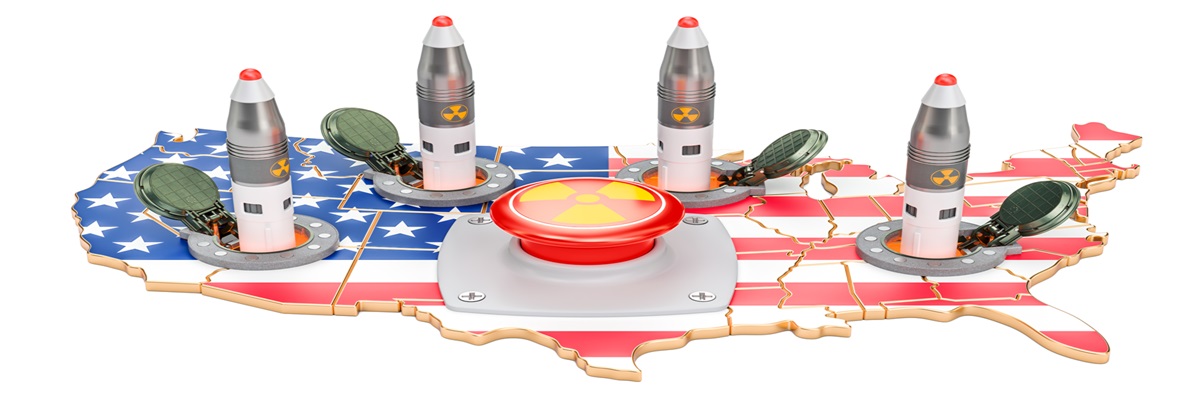Defense & Security
Revision of US Nuclear Operational Guidelines

Image Source : Shutterstock
Subscribe to our weekly newsletters for free
If you want to subscribe to World & New World Newsletter, please enter
your e-mail
Defense & Security

Image Source : Shutterstock
First Published in: Sep.11,2024
Oct.07, 2024
Today, I would like to tell you that the US nuclear strategy is changing . As President Biden’s term draws to a close, the US is changing its nuclear weapons operational guidelines. President Biden , like President Obama, originally argued for a reduction in the role of nuclear weapons. That is why, when he took office as president in 2020, he advocated for sole purpose nuclear use and no first use (NFU). ‘Sole purpose nuclear use’ means that the US will only use nuclear weapons when it is directly attacked by nuclear weapons, and NFU is an abbreviation for ‘No First Use’, which means that it will not use nuclear weapons before its adversary. When a president changes, the US publishes a strategy document called the ‘Nuclear Posture Review (NPR)’, which declares its nuclear strategy and nuclear operational policies to the outside world. Allies were concerned that if President Biden included such content in the NPR, they would distrust the nuclear umbrella provided by the US. Perhaps conscious of these concerns, the 2022 NPR did not include such content, but President Biden’s nuclear philosophy was reflected throughout the strategy book. As a result, the United States decided to stop developing submarine-launched nuclear cruise missiles (SLCM-N) and retire the B83-1 (1.2 mt) missile, an aircraft-delivered nuclear weapon. The Biden administration has changed. In March, it ordered the US military to create nuclear operational guidelines to prepare for a situation in which China, Russia, and North Korea cooperate to launch a nuclear attack on the US, and approved the newly created guidelines. At the same time, it also ordered the development of necessary new weapons and the modernization of the nuclear operational system. In June, the director of the White House National Security Council (NSC)’s nonproliferation office also said, “If the nuclear threat from China, Russia, and North Korea increases, the US will also increase its deployed nuclear weapons,” and hinted at the possibility that “nuclear weapons can be used in conventional warfare.” This is a reversal of President Biden’s policy of giving up preemptive nuclear use. In this way, President Biden is adopting new nuclear operational guidelines and nuclear doctrine while changing his previous position with less than a year left in his term. The reason for this change in the US nuclear doctrine is that he is taking the nuclear arms buildup of China, Russia, and North Korea very seriously in the new Cold War situation, and the strategic focus on the North Korean nuclear issue is changing from ‘North Korea’s nuclear abandonment’ to ‘prevention of nuclear use.’ Although the sensitive parts of the newly created nuclear weapons operational guidelines have not been made public, it is known that they contain explicit concerns about China’s nuclear arms buildup. The guidelines are based on the US Department of Defense’s estimate that China’s nuclear weapons will increase to 1,000 by 2030 and 1,500 by 2035, and are intended to prepare for the possibility that China could threaten the US by cooperating with Russia and North Korea on nuclear weapons. The same goes for North Korea. In March, the US, through the NSC and experts, mentioned the need for “interim steps” that are a step back from the goal of “denuclearization,” and said, “We are willing to talk to North Korea unconditionally for negotiations.” The terms “denuclearization of North Korea” and “CVID,” or “complete, verifiable, and irreversible denuclearization of North Korea,” disappeared from the platforms of the US Democratic and Republican parties announced ahead of the November presidential election. North Korea may say that “the US has recognized our possession of nuclear weapons,” but that is a misinterpretation. It does not mean accepting, or tolerating, North Korea’s nuclear weapons, but rather recognizing, and is trying to lower the nuclear threat through dialogue, recognizing that North Korea has no intention of giving up its nuclear weapons immediately, but responding strongly if North Korea refuses. As such, the nuclear issue is now reaching a dead end. As the military closeness and nuclear cooperation between China, Russia, and North Korea intensifies, it is ultimately triggering a response from the US. Naturally, South Korea cannot just keep watching. In Korea, civic groups are currently conducting a campaign to collect 10 million signatures calling for nuclear armament, but it is unclear how much this movement will change national policy in the future. If this trend continues, there may be countermoves in Japan and Taiwan as well. It is difficult to understand why North Korea should really increase its nuclear weapons and strengthen its military power with drones and artillery, even though food shortages are starting again, the youth are opposing the one-party dictatorship, and the elite are increasingly defecting to seek freedom. “Copyright © 1998-2023, RFA. Used with the permission of Radio Free Asia, 2025 M St. NW, Suite 300, Washington, D.C. 20036. https://www.rfa.org.”
First published in :

Former Director of the Institute for Unification Studies
Unlock articles by signing up or logging in.
Become a member for unrestricted reading!